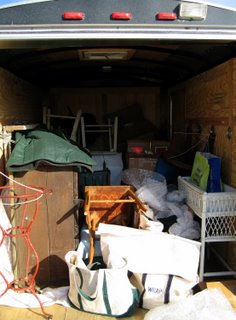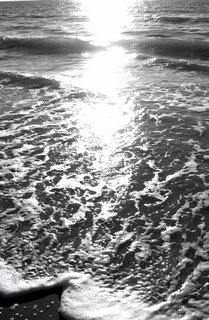
We usually try to make at least one antiques buying trip to the Midwest in mid-winter. Our reason is simple: it is off-season, and prices are therefore lower. If we end our swing at the big “Heart of Country” show in Nashville, which draws hundreds of good quality dealers selling to high-end buyers from all over the country at the Gaylord Opryland Convention Center, we can be very efficient and get to see a great big bunch of good antiques all in one place. On the down side, taking a long road trip that time of year can be very problematic, especially when pulling a trailer. As if to drive that point home, the day before we start out from Maine it snows all night.
This year we begin our journey on the 14th of February and initially head for Indiana to make a delivery of a lovely 17th century French table we sold last season to collectors who live in Fort Wayne. As we clear Boston the weather turns weird. The temperature climbs to the mid 50s, and stays that way all the first day and most of the second as urban sprawl gives way to the clustered white silos of grain farms.
We drop off the table in a pretty house filled with 18th century American antiques bought years ago from, among others, Sarah’s grandmother. Then we head north to South Bend and do some buying at a very good small mall near Notre Dame University. It is about 6 in the afternoon and we have just loaded our purchases in the trailer when Sarah happens to look to the north and points in horror to the blackest, ugliest clouds either of us have ever seen. The staff at the mall had told us that the region was currently under a tornado watch and we are sure that the wicked looking sky is about to drop a twister on our heads any second. As luck would have it, the Hampton Inn that we were booked into that night is only about two minutes from the mall and we lurch into the lobby clutching our basic overnight gear about 30 seconds in front of a murderous onslaught of rain and wind. Going outside is out of the question now, so we microwave some Lean Cuisine dinners in our room and, feeling very relieved, call it a night.
The next day winter is back with a vengeance. The temperature has fallen into the teens overnight and our Suburban and trailer are coated with snow and ice. It is blowing hard from the northwest and driving is tricky. We head south towards Indianapolis on Route 31 and in Kokomo, Indiana we buy a Garmin StreetPilot GPS system. For those of you who don’t know, or care, about wandering around the U.S. on back country roads looking for antiques, you can ignore the following admonition but if you care about not getting lost in strange rural areas take my advice and invest in the best GPS system you can afford. These magical devices can get you from Bell Buckle, Tennessee to Van Wert, Ohio without missing a turn. They can find the nearest Chinese restaurant and the next Holiday Inn. They can tell you how far away things are and how long it will take you to get to them. Our little beauty sits on her beanbag base in the center of our windshield and speaks to us in a soft female voice, reminding us of turns. If we are arrogant enough to ignore her advice, she never loses her temper; a trait which, I confess, can be both comforting and disconcerting.
We are told in South Bend about a little antique mall in Carmel, a couple of hours to the south, that is worth a look. So after turning left just before the regional hospital (thanks to Ms Garmin) we ease into a tight parking space and spend about an hour buying a couple of wicker pieces, a wire county store broom holder and a wonderful white oak 1920s art deco furniture set consisting of a table and 4 chairs made by the famous mid-western Sellers Furniture Co.
Good as Carmel is, our main goal for the day is further down Route 31. It’s a monstrous 71,000 square foot mall in Edinburgh, Indiana. We are not disappointed. Unlike most antique places that grow like topsy, this venue had been planned from the ground up as a mega dealer facility. There is plenty of parking for our van and trailer, easy access to the loading dock and a large, and helpful service staff. We spend the rest of the day until closing “working the store” and come away with many treasures including a painted, signed grain meal bin perfect for recyclables or fire wood, a child’s wicker rocker and a lovely old country mantelpiece.
That night we share a motel with a gaggle of teen-age girls and their families bound for a regional basketball tournament. Basketball in Indiana is a very serious religion and the level of noise in the halls does not bode well for a good night’s sleep but miraculously around 9pm the corridor doors stop slamming and the squealing buffalo herd running up and down the halls stops stampeding. We sleep very well indeed.
The next day we push further south to Cincinnati still in very cold, raw, snow-spitting weather. Even though Cincinnati is most definitely in the mid-west, parts of it, particularly the Indian Hill Village area, feel very much like Brookline, Massachusetts. Here old money perches comfortably on the ridges and in the fields of what was once prime fox hunting territory and while stone mega mansions have definitely sprouted among the wood frame and brick homes of the old guard, one wonders whether these newcomers will have an easy time getting into the venerable Camargo Club.
A day on the hunt in Cincinnati produces one of the biggest treasures of our trip so far, a lovely 7 foot long single board, plank seat, Pennsylvania country bench in soft worn grey paint. It is in great condition and we are delighted. The bench and a beautiful matched pair of large Chinese cabbage leaf ginger jar lamps make our day in the Queen City a very good one indeed.
The next day is Sunday and we have to wait until noon to pick up our bench so we spend the morning touring the Wiebold Studio facility in Terrace Park, an impressive conservation company that does metal, ceramic and painting restoration.
The drive to the big doings in Nashville is supposed to take around 5 hours and the trip is going smoothly but with only about 20 miles to go it starts to rain. The temperature hovers around 27 degrees. Now, coming from Maine, we know rain in freezing weather is cause for serious alarm and we slow way WAY down. In a matter of minutes the highway is filled with the harsh strobe lights of police cars, ambulances, fire engines and tow trucks as the unwary and the foolish turn the road into a grizzly tableau of smashed steel and glass. We drive by three major accidents in as many minutes. It is white-knuckle time in earnest and we crawl the last few miles into the safe haven of the enormous parking lot of the huge resort and convention complex called Gaylord Opryland. Those last few miles are hell. The hotel is an “Everything In One Place So You Can Have It All” Americana-inspired hillbilly heaven where indoor riverboats and ante bellum balconies and dancing fountains share space with sushi bars, Godiva candy stores and Johnny Cash memorabilia. The place has almost 3000 rooms. There is a convention of sewer contractors ("Transforming the Way America Renews Sewer Pipe") currently going on but we are grateful as hell to be there and our rooms are tasteful, clean, modern and quiet. The bed is one of the most comfortable we have ever slept in.




